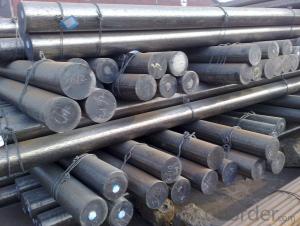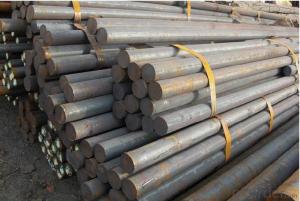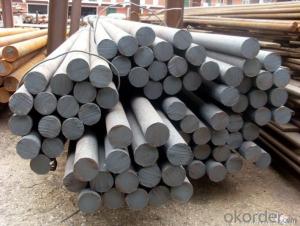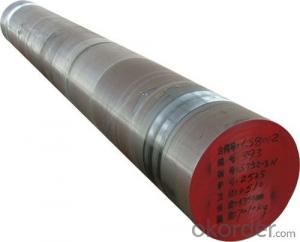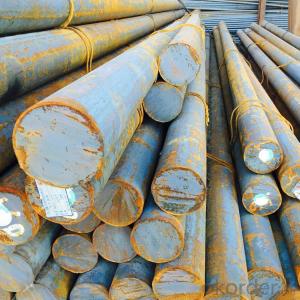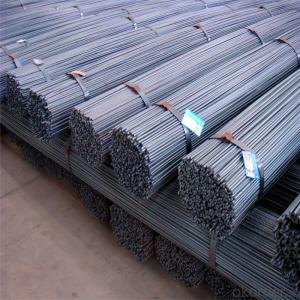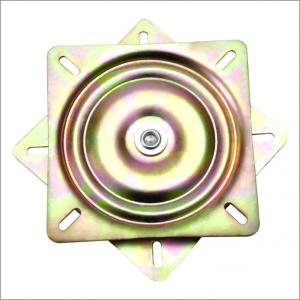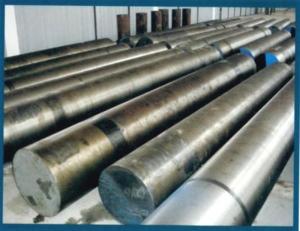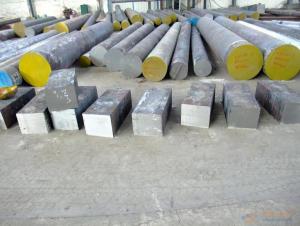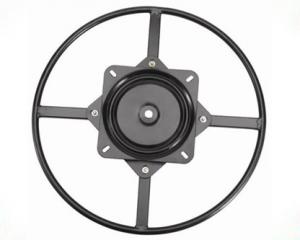SAE 1020 Carbon Steel Round Bar of CNBM
- Loading Port:
- Shanghai
- Payment Terms:
- TT OR LC
- Min Order Qty:
- 25 m.t.
- Supply Capability:
- 50000 m.t./month
OKorder Service Pledge
OKorder Financial Service
You Might Also Like
Item specifice
SAE 1020 Carbon Steel Round Bar of CNBM
Product Description
1. Steel grade: SAE1020, 20#, C22, S20C
2. Length: 6M-12M
3. Diameter: 16mm-300mm
4. Product range: round bar, flat bar, square bar
5. Technique: Hot rolled, forged, cold drawn
Specification:
Material | SAE 1020 | Round bar | Dia(mm) | 16-300mm |
Process | EAF + LF + VD + Forged + Heat Treatment (optional) | Length (mm) | Max 12m | |
Heat treatment | Normalized / Annealed / Quenched / tempered | Flat bar | Thickness(mm) | 8-500mm |
Delivery condition | Hot forged +Rough machined (black surface after Q/T)+ Turned (optional) | Width(mm) | 70-200mm | |
Test | Ultrasonic test according to SEP 1921-84 D/d | Length (mm) | Max 12m |
Chemical Composition
C | Si | Mn | Cr | Ni | Cu |
0.17~0.23 | 0.17~0.37 | 0.35~0.65 | ≤0.25 | ≤0.30 | ≤0.25 |
Packing and Delivery:
Packing in bundle package, or as customer's requirements.
Delivery Detail: 45 days after receiving the deposit.
Usage and Applications
1. Steel round bar is used in a large number of architectural and engineering structures. Or it can be used in construction of plants for the production of steel house frames, high-voltage transmission towers, bridges, vehicles, boilers, containers, ships, etc.
2. And we can use this kind of product on the performance of the mechanical parts if the demand is not very high.
3. Some special material steel round bar can be used for main shaft of steamer, hummer shank, with big section and supper force.
Product Show
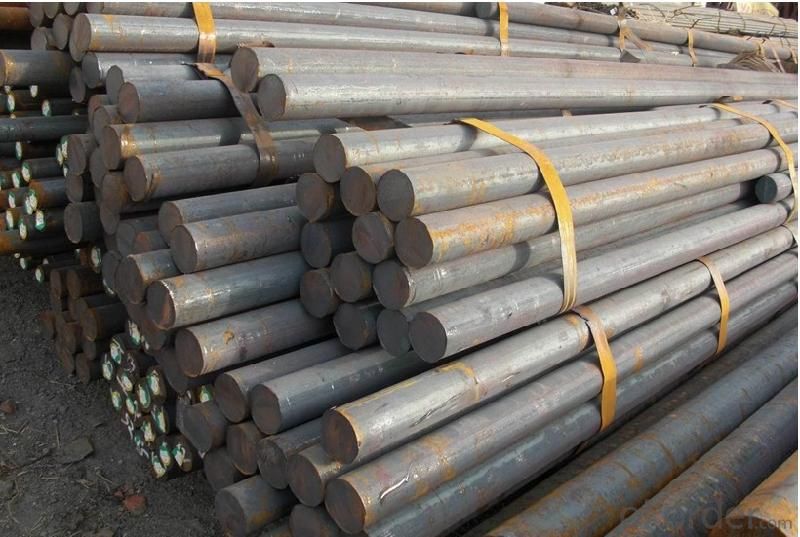
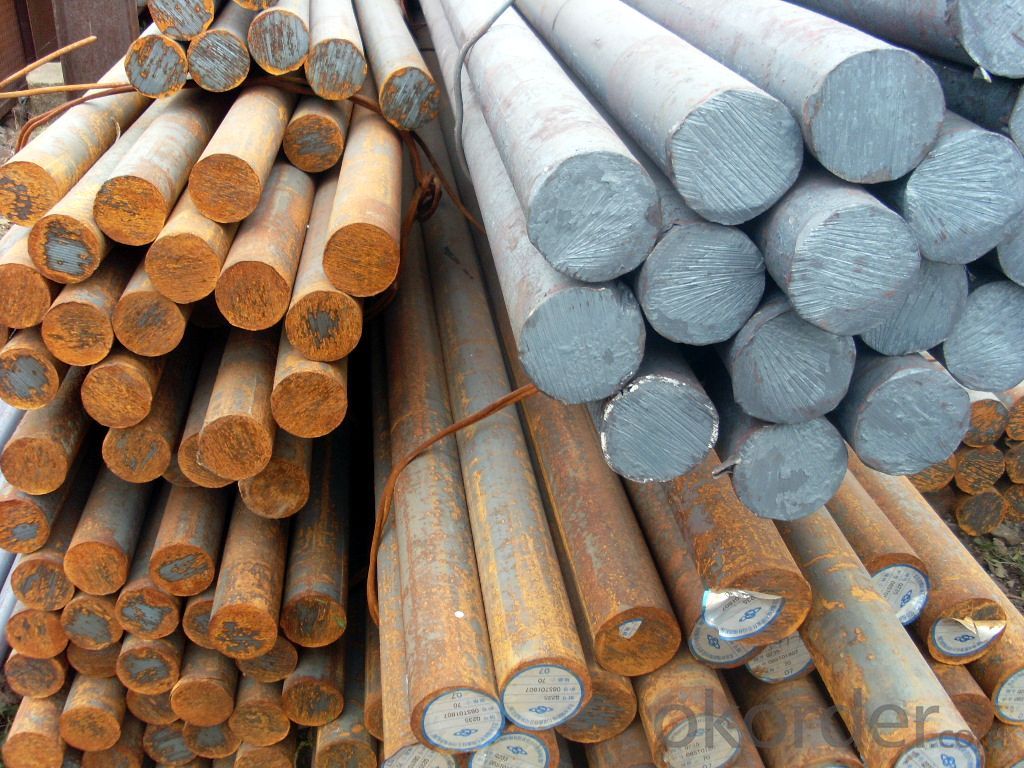
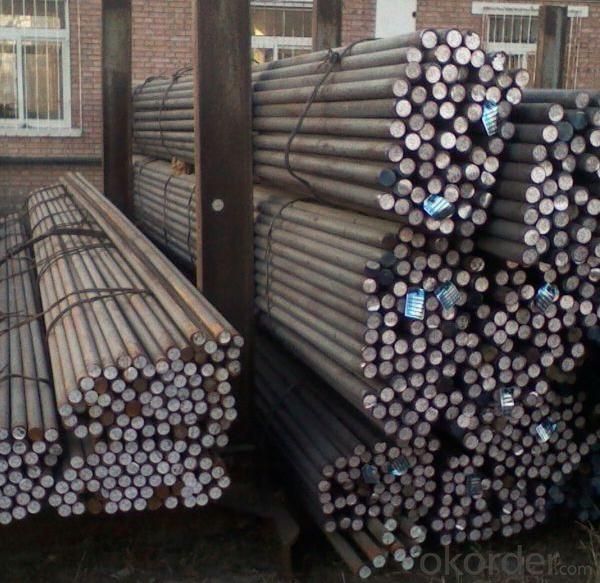
- Q:How does special steel perform in power generation applications?
- Due to its exceptional properties and performance, special steel holds great value in power generation applications. Power generation equipment, such as gas turbines, steam turbines, and nuclear reactors, operate under extreme conditions characterized by high temperature, pressure, and corrosive environments. Specifically designed to withstand these harsh conditions, special steel alloys offer numerous advantages in power generation. First and foremost, special steel demonstrates excellent heat resistance, making it an ideal choice for power generation equipment operating at high temperatures. With a high melting point, this steel can maintain its structural integrity and mechanical properties even when exposed to elevated temperatures. This is particularly crucial for gas turbines and steam turbines, as they convert thermal energy into mechanical energy to generate power. Secondly, special steel possesses superior strength and toughness, making it highly suitable for power generation applications that demand reliable and durable components. Power plants operate continuously, often for extended periods, and endure significant mechanical stresses. Special steel can bear these loads without deformation or failure, ensuring the safe and efficient operation of power generation equipment. Furthermore, special steel exhibits excellent resistance to corrosion and oxidation, which are prevalent in power generation environments. This steel is designed to combat the corrosive effects of high-temperature gases, steam, and water, thereby guaranteeing the longevity of power generation equipment. Power plants commonly utilize corrosion-resistant alloys of special steel to prevent material degradation and maintain operational efficiency. Moreover, special steel offers excellent weldability and machinability, in addition to its mechanical and corrosion-resistant properties. This facilitates the fabrication and assembly of power generation equipment, ultimately reducing production time and costs. In summary, special steel is a reliable and high-performance material for power generation applications. Its exceptional heat resistance, strength, toughness, corrosion resistance, and weldability make it the ideal choice for gas turbines, steam turbines, and other power generation equipment. The utilization of special steel in power generation enhances efficiency, reliability, and longevity of these critical systems.
- Q:How does case-hardening steel achieve high surface hardness?
- Case-hardening steel achieves high surface hardness through a process called carburizing or nitriding, where the steel is heated in the presence of carbon or nitrogen-rich substances. This allows carbon or nitrogen atoms to diffuse into the surface of the steel, creating a hardened outer layer while maintaining a tough and ductile core.
- Q:Can special steel be used in the manufacturing of cutting-edge technology products?
- Yes, special steel can be used in the manufacturing of cutting-edge technology products. Special steel, such as high-strength alloys or stainless steel, offers various desirable properties like durability, corrosion resistance, and high strength-to-weight ratio. These characteristics make it suitable for the production of components used in advanced technology products like smartphones, laptops, aerospace equipment, and medical devices.
- Q:What are the different surface finishing techniques for special steel parts?
- There are several surface finishing techniques that can be used for special steel parts to enhance their appearance, protect them from corrosion, and improve their overall performance. Some of the commonly used techniques include: 1. Polishing: This technique involves using abrasives to create a smooth and glossy surface on the steel part. It not only enhances the aesthetic appeal but also improves the part's resistance to corrosion. 2. Plating: Plating is a process that involves depositing a layer of metal onto the surface of the steel part. Common plating options include chrome, nickel, and zinc. This technique provides additional protection against corrosion, improves wear resistance, and can also give the part a desired color or finish. 3. Powder coating: Powder coating is a method where a dry powder is applied to the surface of the steel part electrostatically and then cured under heat. The powder melts and forms a hard, durable, and attractive coating. This technique provides excellent resistance to corrosion, impact, and chemicals. 4. Anodizing: Anodizing is primarily used for aluminum, but it can also be applied to some special steel parts. It involves creating a controlled oxide layer on the surface of the part, which enhances its corrosion resistance, improves its appearance, and can provide an insulation layer. 5. Passivation: Passivation is a chemical process that removes free iron and other contaminants from the surface of the steel part. It helps prevent corrosion and improves the part's resistance to staining or discoloration. 6. Heat treatment: Heat treatment is a process that involves heating and cooling the steel part to alter its physical and mechanical properties. It can improve hardness, strength, and toughness, while also providing a desired surface finish. 7. Electropolishing: Electropolishing is an electrochemical process that removes a thin layer of metal from the surface of the steel part. It helps eliminate surface imperfections, smoothens the part, and improves its corrosion resistance. It is important to choose the appropriate surface finishing technique based on the specific requirements of the special steel part, such as its function, desired appearance, and environmental conditions it will be exposed to.
- Q:What are the mechanical properties of special steel?
- Special steels, also known as alloy steels, possess enhanced mechanical properties compared to regular carbon steels. These properties vary depending on the specific alloying elements and their concentration. Some common mechanical properties of special steel include: 1. High tensile strength: Special steels are known for their exceptional strength, making them suitable for applications that require high load-bearing capacity. The tensile strength of these steels can range from 500 MPa to over 2,000 MPa, depending on the composition. 2. Improved hardness: Alloying elements in special steels can significantly increase their hardness. This property is desirable for applications that require resistance to wear and abrasion. Special steels can achieve hardness levels ranging from 200-600 HB (Brinell hardness), depending on the specific alloy composition and heat treatment. 3. Good toughness: Special steels often exhibit good toughness, which refers to the ability to absorb energy before fracturing. This property is crucial for components subjected to impact or dynamic loading. The combination of high strength and toughness makes special steels suitable for demanding applications such as automotive parts or industrial machinery. 4. Excellent fatigue resistance: Special steels are designed to withstand cyclic loading without failure. They exhibit enhanced fatigue resistance, allowing them to endure repeated stress cycles without compromising their structural integrity. This property makes special steels ideal for critical components in aerospace, automotive, and machinery industries. 5. Superior corrosion resistance: Depending on the alloy composition, special steels can offer improved corrosion resistance compared to regular carbon steels. The addition of elements like chromium, nickel, or molybdenum helps to form protective oxide layers on the surface, preventing corrosion and increasing durability. 6. High temperature resistance: Some special steels are specifically formulated to perform well at elevated temperatures. They possess excellent heat resistance and can retain their mechanical properties even at extreme temperatures. This property is crucial for applications such as turbine blades, exhaust systems, or high-temperature furnaces. It is important to note that the specific mechanical properties of special steel can vary widely depending on the specific alloy composition, heat treatment, and processing techniques used. Therefore, it is essential to consult the material specifications or consult with experts to determine the exact mechanical properties of a particular special steel.
- Q:How is special steel made?
- Special steel is made through a complex and precise manufacturing process that involves several steps. The first step is the selection of high-quality raw materials, typically iron ore and scrap metal, which are then melted in a furnace at extremely high temperatures. This process removes impurities and creates molten steel. Once the molten steel is obtained, it is further refined to achieve the desired composition and properties. This is done by adding various alloying elements such as chromium, nickel, manganese, and vanadium. These elements help enhance the steel's strength, hardness, corrosion resistance, and other specific characteristics required for the intended application. Next, the molten steel is cast into different shapes or forms, such as bars, slabs, or billets, through a process called casting. During casting, the steel is poured into molds and allowed to cool and solidify. This solidified steel is then further processed through various techniques like rolling, forging, or extrusion to achieve the desired shape and dimensions. After shaping, the steel undergoes heat treatment, which involves controlled heating and cooling processes. Heat treatment helps refine the microstructure of the steel, improving its mechanical properties. This can include processes like quenching, tempering, annealing, or normalizing, depending on the specific requirements. Finally, the steel is subjected to rigorous testing and quality control measures to ensure that it meets the required specifications and standards. These tests can include mechanical, chemical, and physical analyses, as well as non-destructive testing techniques, to verify the integrity and performance of the special steel. Overall, the production of special steel is a highly technical and specialized process that involves careful selection of raw materials, precise alloying, casting, shaping, heat treatment, and rigorous quality control. The end result is a steel with exceptional properties that can be tailored to meet the specific needs of various industries, such as automotive, aerospace, construction, or manufacturing.
- Q:How does special steel contribute to sustainability?
- Special steel contributes to sustainability in several ways. Firstly, special steel is highly durable and has a long lifespan. This means that products made from special steel, such as buildings, bridges, and machinery, have a longer service life compared to other materials. This reduces the need for frequent replacements and repairs, thereby reducing the consumption of resources and energy required for manufacturing. Secondly, special steel is recyclable. At the end of its life cycle, it can be easily collected and recycled into new steel products without any loss of quality. This reduces the demand for new raw materials and minimizes the environmental impact caused by mining and extraction processes. Furthermore, special steel is known for its strength and lightweight properties. This allows for the design and construction of lighter and more energy-efficient structures and vehicles. For example, by using special steel in automobiles, the weight of the vehicle can be reduced, resulting in lower fuel consumption and greenhouse gas emissions. Additionally, the production of special steel has become more sustainable over the years. Steel manufacturers are adopting advanced technologies and processes to reduce energy consumption, emissions, and waste generation. This includes using energy-efficient furnaces, recycling waste heat, and implementing water management strategies. Overall, the use of special steel contributes to a more sustainable future by promoting durability, recyclability, energy efficiency, and reduced environmental impact.
- Q:How does special steel contribute to the transportation equipment industry?
- Special steel plays a crucial role in the transportation equipment industry by providing high strength, durability, and resistance to wear and corrosion. It allows for the construction of lighter yet stronger components, leading to improved fuel efficiency, increased payload capacity, and enhanced safety in vehicles. Additionally, special steel enables the production of precision parts and components, ensuring the reliability and performance of transportation equipment.
- Q:How does special steel contribute to the manufacturing of aerospace components?
- Special steel plays a crucial role in the manufacturing of aerospace components by offering superior strength, durability, and heat resistance properties. This type of steel, specifically designed for aerospace applications, ensures the structural integrity and reliability of crucial aircraft parts, such as landing gears, turbine blades, and engine components. Additionally, special steel's unique composition allows for reduced weight, thus enhancing fuel efficiency and improving overall aircraft performance. By providing these essential characteristics, special steel contributes significantly to the safety, efficiency, and advancement of aerospace manufacturing.
- Q:How is die steel used in metal stamping processes?
- Die steel is used in metal stamping processes as it provides the necessary hardness, durability, and wear resistance required to shape and form metal sheets or components. Die steel dies are used as molds or templates, which are pressed onto the metal to cut, bend, or shape it into the desired form. The high strength and toughness of die steel enable it to withstand the extreme pressures and repetitive impacts of the stamping process, ensuring precise and consistent results.
1. Manufacturer Overview |
|
|---|---|
| Location | |
| Year Established | |
| Annual Output Value | |
| Main Markets | |
| Company Certifications | |
2. Manufacturer Certificates |
|
|---|---|
| a) Certification Name | |
| Range | |
| Reference | |
| Validity Period | |
3. Manufacturer Capability |
|
|---|---|
| a)Trade Capacity | |
| Nearest Port | |
| Export Percentage | |
| No.of Employees in Trade Department | |
| Language Spoken: | |
| b)Factory Information | |
| Factory Size: | |
| No. of Production Lines | |
| Contract Manufacturing | |
| Product Price Range | |
Send your message to us
SAE 1020 Carbon Steel Round Bar of CNBM
- Loading Port:
- Shanghai
- Payment Terms:
- TT OR LC
- Min Order Qty:
- 25 m.t.
- Supply Capability:
- 50000 m.t./month
OKorder Service Pledge
OKorder Financial Service
Similar products
New products
Hot products
Hot Searches
Related keywords
